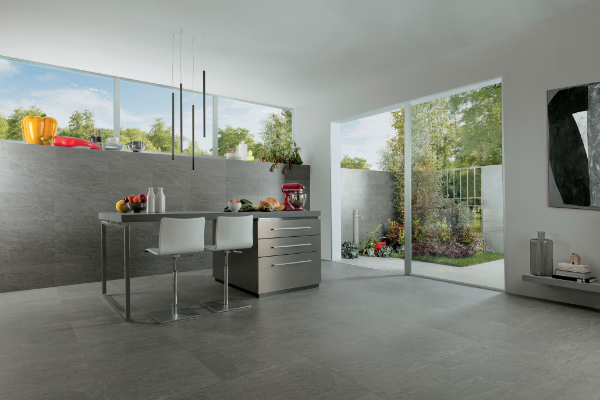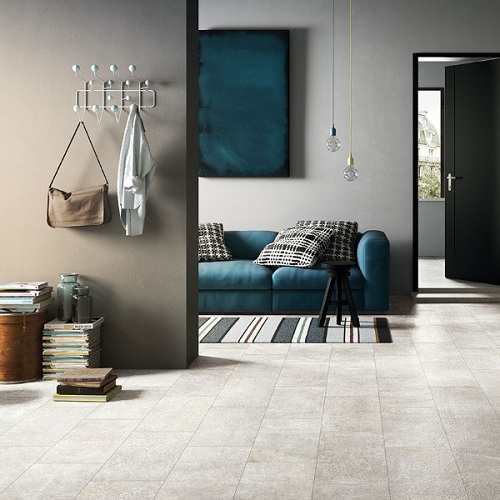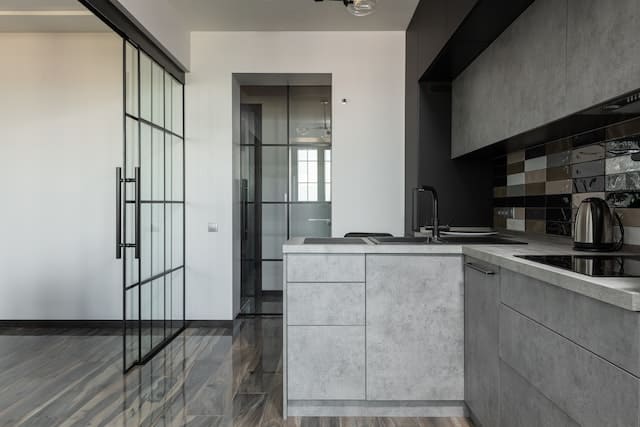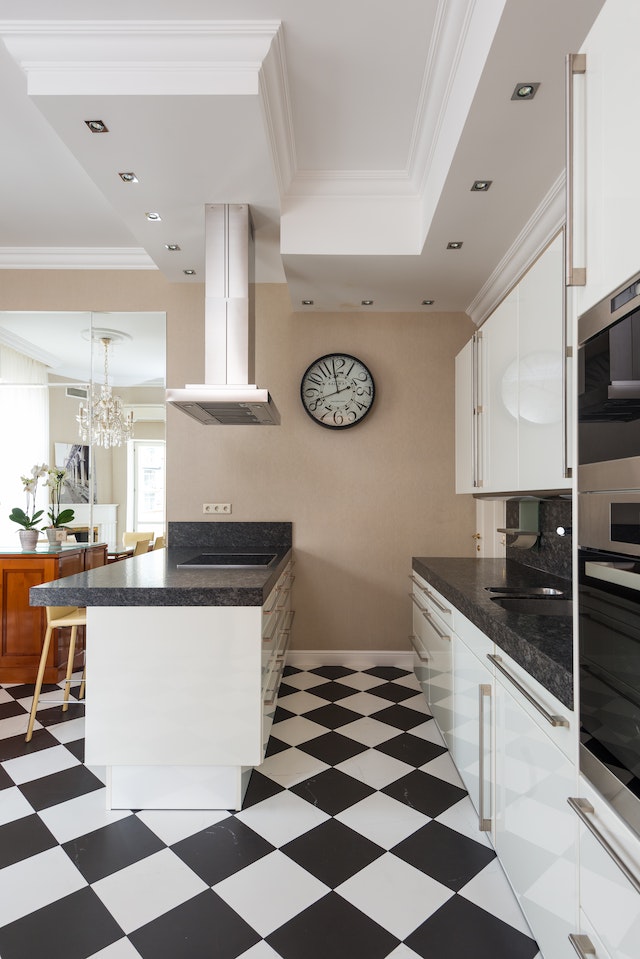Tile floors are popular for their durability, beauty, and nearly endless design possibilities. Tile is a generic term that encompasses stone, ceramic, and porcelain materials produced in individual pieces rather than in sheets like vinyl. They come in varying sizes and shapes, most commonly square and rectangle, and in numerous increasingly large sizes. To use as flooring, the tile you select must be rated for floor use, with enough hardness and slip resistance to serve this purpose. The showroom sample and box will be marked accordingly.
Stone
Stone tiles are created from natural quarried materials, with granite, marble, limestone, travertine, and slate being especially popular for upscale floors. They are typically installed in large-format sizes with nearly imperceptible grout lines, contributing to the prized, seamless look of a natural stone floor. Many, however, are sensitive to acids and prone to etch or stain if spills are not cleaned immediately. Sealing helps but adds a regular maintenance chore.These factors, along with their high cost to purchase and install, have contributed to the increasing popularity of improved ceramic and porcelain tile offerings.






